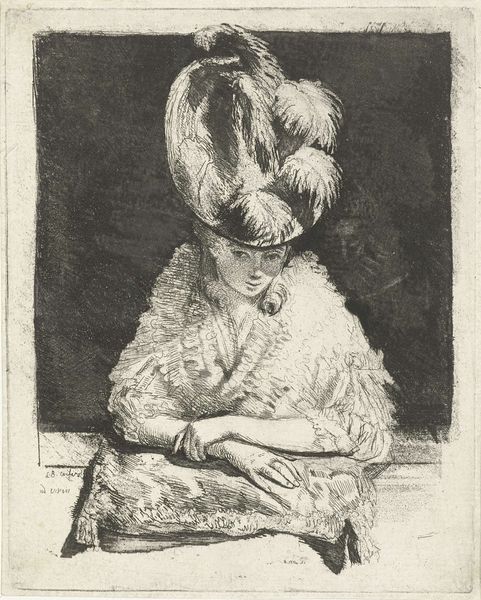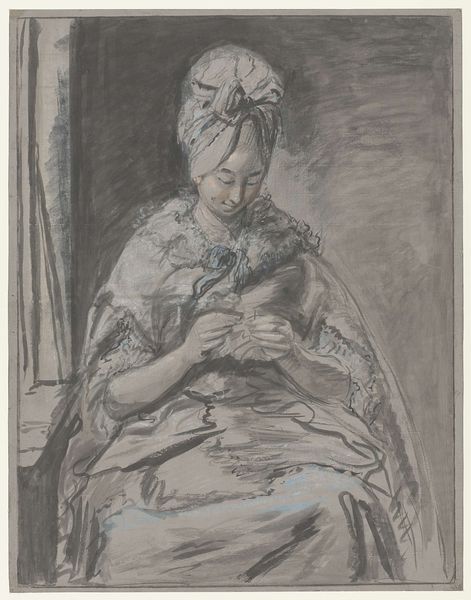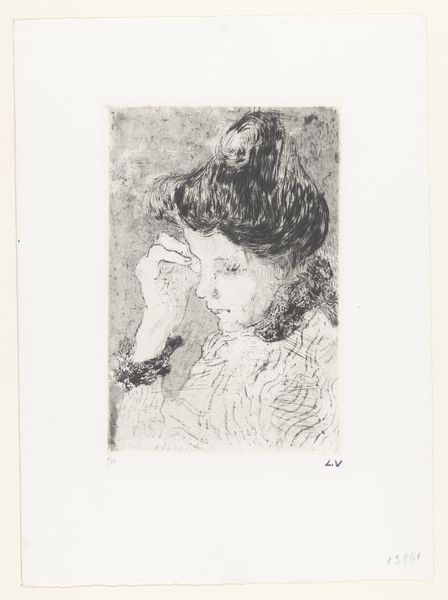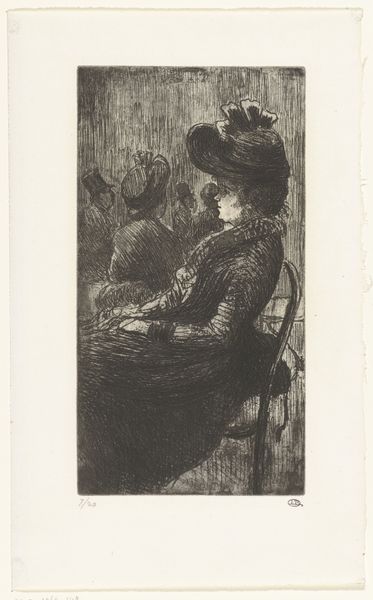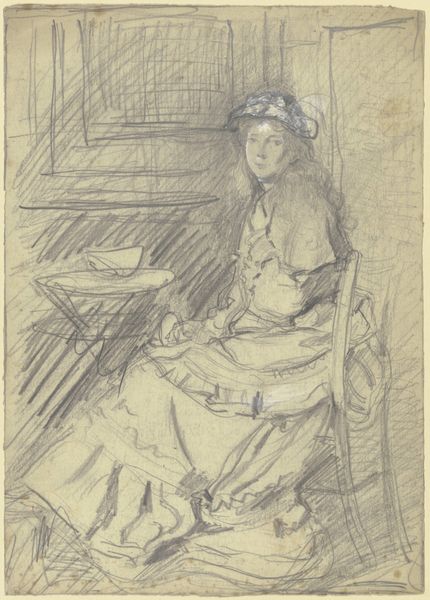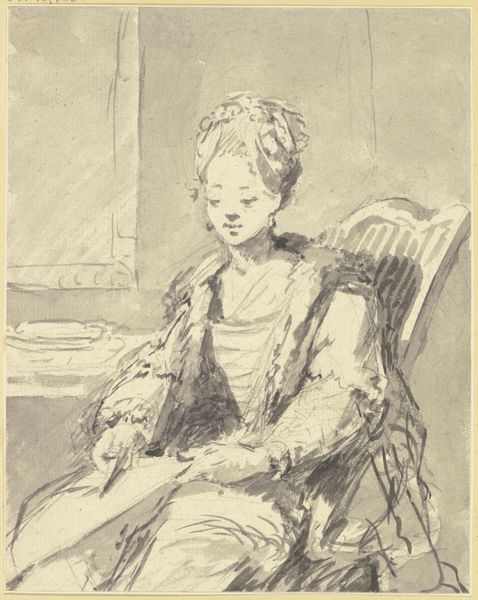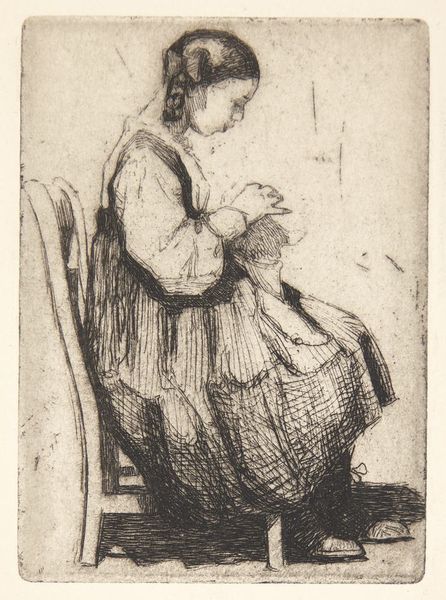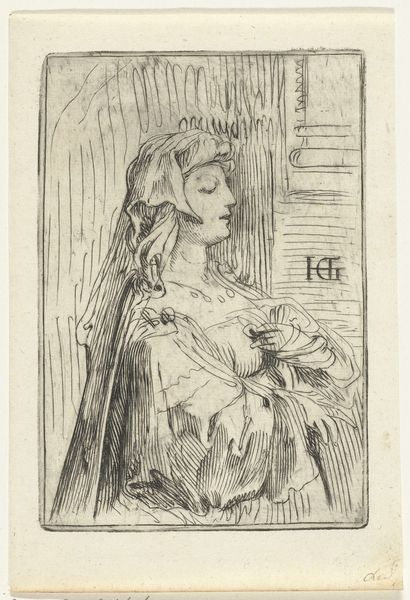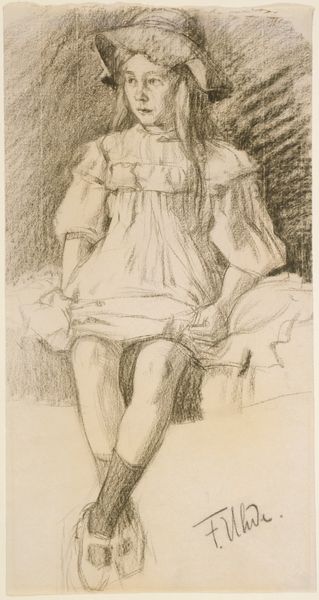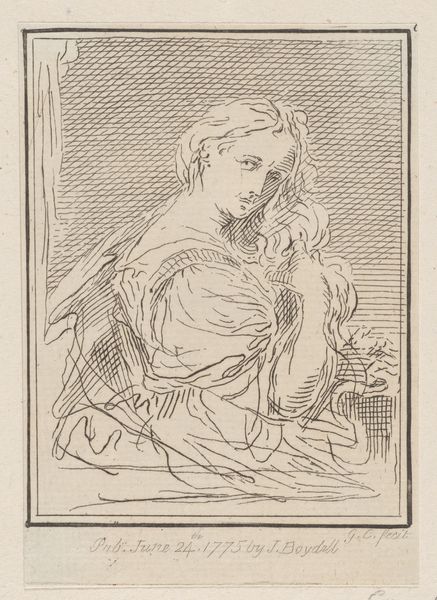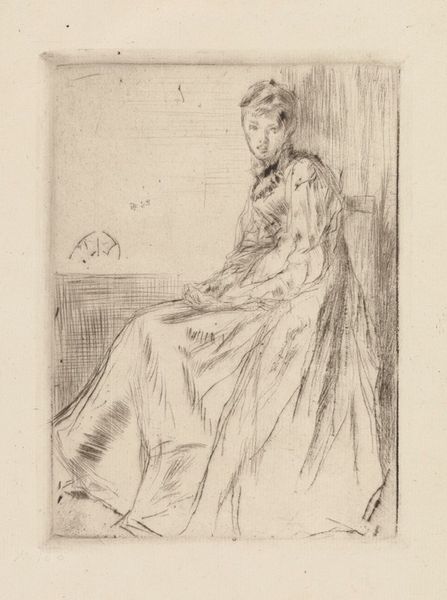
Dimensions: height 157 mm, width 125 mm
Copyright: Rijks Museum: Open Domain
Curator: Immediately, I see pensiveness and a quiet longing emanating from the sitter, a somber intimacy emphasized by the etched lines. Editor: We’re looking at "Portret van een jonge vrouw met hoed die uit het raam kijkt," or "Portrait of a young woman with a hat looking out of the window," a work attributed to Louis Bernard Coclers, active between 1756 and 1817. It’s an etching, almost like a very detailed pencil sketch, typical of Baroque portraiture. Curator: That elaborate hat really captures my attention. The extravagant feathers perched jauntily atop her head suggest an entire performance of status. And the rest of the ornate dress follows that extravagance! But why the melancholy expression? Editor: Court portraiture served multiple functions: recording likeness, sure, but more often proclaiming status. That massive hat is about proclaiming importance, placing the figure in an elite social setting. As for the pensive expression, I’d say artists were increasingly interested in exploring inner psychological states by this period, especially among the nobility. It’s not just surface, it’s hinting at inner depth. Curator: Absolutely, the Baroque era embraced this dramatic tension, visually negotiating the complex social theater of the time. So here, her posture could be a conscious visual presentation and maybe also an unintentional glimpse into vulnerability? Editor: Possibly, but I tend to view that introspection as strategically performative too, fitting neatly within accepted conventions, don't forget it also makes it appeal to the new bourgeoise of that time. That level of fine-tuning allowed those with access to dictate standards of public display and behavior. Curator: It is a carefully considered representation, intended for public consumption. However, the eyes hold so much human truth. They draw the viewer in, almost begging them to decipher the story beneath the image. It suggests a hidden narrative—a personal, psychological world that the finery both reveals and obscures. Editor: Right, and analyzing portraits like these lets us ask compelling questions: How did the elite classes of that era manage to performatively stage images for consumption? And how much of a cultural memory do we, the public, project onto the figure represented through our consumption and historical analyses? Curator: Precisely! Through cultural symbolism, we begin to understand how people, both then and now, continually negotiate this visual, psychological terrain. Editor: Ultimately, in considering what she truly felt, the sitter makes us consider what portraits felt like to their original audiences as well.
Comments
No comments
Be the first to comment and join the conversation on the ultimate creative platform.

